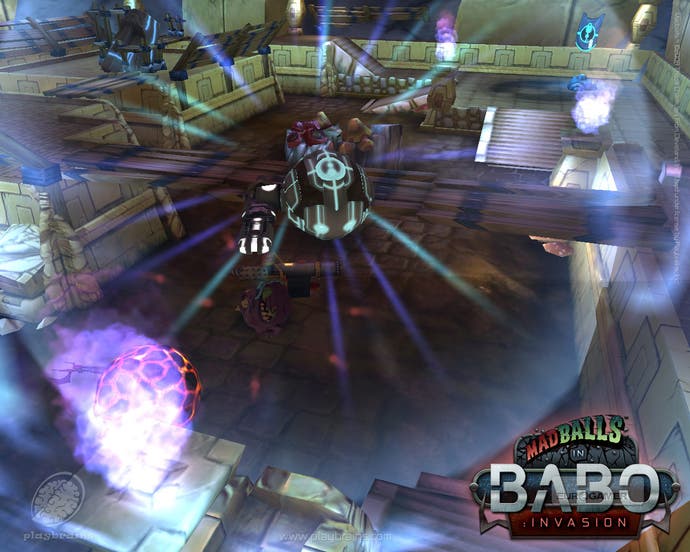Madballs in Babo: Invasion
Nothing to sphere.
It's no secret that Xbox Live Arcade games without the buoyancy of a licence or well-known series often sink without trace. The first Geometry Wars may have sold and sold, but it was a novelty that benefited from exquisite timing: for the first few months it had precious little competition on Xbox's new digital download service.
Today, your brand new IP, still gloopy in its womb juices, competes with venerable re-releases cherry-picked from the canon - Ikaruga, Gunstar Heroes, Street Fighter II HD and so on. Or, worse still, goes toe-to-toe for players' Microsoft Points with million-dollar, EA-marketed heavyweights such as Battlefield 1943, a game that's one musket and a single-player campaign shy of a full-priced boxed release. So yeah: a license can be crucial.
But even so: Madballs. Really? That's what you're going with?
The 20-year-old toy line, for those too young or old to remember, consisted of a selection of rubber balls moulded with ugly faces - sort of like a collectable set of decapitated Garbage Pail Kids. Madballs in Babo: Invasion is an ugly game, all brown terrain, luminous green rivers and splurge gun splatter textures. The environments are robust and detailed but in this 12-year-old boy's bedroom of a world there's little beauty.
The Saturday morning kids' TV aesthetic extends to the wailing guitar soundtrack, exclamation point-ridden dialogue and gunge-tank humour. But don't dismiss this as a misguided anachronism. The licence may be aimed at the kind of eighties schoolkids who'd buy a Madballs character on eBay as an ironic student mantlepiece ornament, but the underlying game is built for those who love games regardless of their licence.
Part of the appeal is the way in which Madballs wears its influences on its sleeve. At first touch, the twin-stick shoot ‘em up appears to be an anthropomorphised Geometry Wars. The feeling is reinforced by the scaling-score multiplier pick-ups and the secondary top-down camera that shifts the default isometric view overhead.

But as the single-player campaign unfurls, it becomes clear that Madballs' designers have drawn inspiration from a wider range of titles. Guiding your Madball along centimeter-wide walkways and over vats of bubbling larva before dropping ten-feet onto a flipswitch is pure Marble Madness.
The game's second boss is a giant flaming boulder that splits into two, smaller boulders every time its health is depleted, until the environment is rippling with fiery ball bearings - which brings Asteroids to mind. Likewise, the limitation of two weapons at any one time ensures every new weapon pick-up becomes a tactical decision of Master Chief magnitude.
In the single-player campaign much of your time is spent rolling through corridored environments, shooting down enemies and flipping switches to unlock gates en route to a climactic boss fight. As the game progresses the switch puzzles become more complex and enemy waves more regular, but the rhythm and flavour of missions rarely changes.

